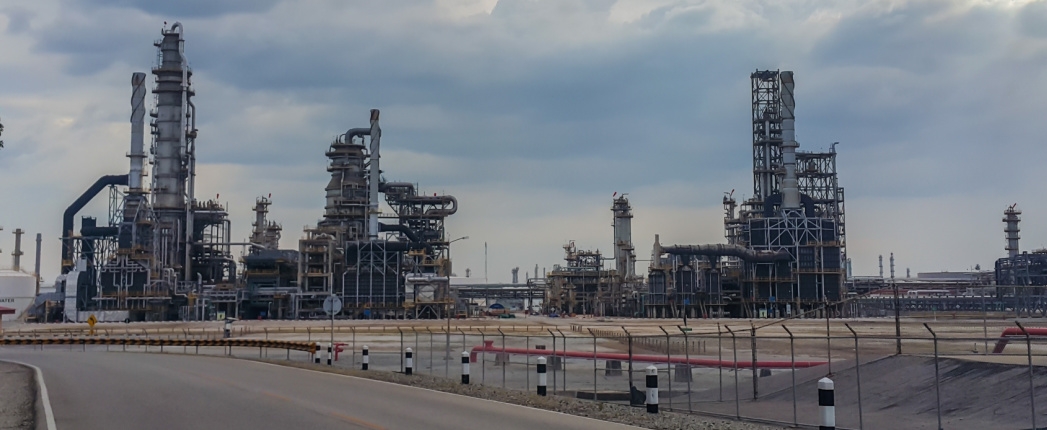
JEDDAH, Saudi Arabia – Mineral base oils are refined on five of the world’s continents – the exceptions being Australia and Antarctica – and every region with base oil plants has operations that are profitable. But the Middle East has advantages over all others, an industry analyst said here last month, thanks to plentiful supply of very waxy crude oils and its use of oil hydrocrackers to make diesel.
“It’s a big advantage for the Middle East,” Consultant Amy Claxton told the ICIS Middle Eastern Base Oils and Lubricants Conference here Oct. 18. “Because of these factors, their operating costs are lower than producers in other regions.”
Mineral base oils come from refineries that process crude oil into fuels – or in a few cases from separate base oil plants associated with such refineries. The chemical make-up and properties of crude oils varies significantly – more than a hundred varieties are traded around the world, 30 of them heavily – and some are better suited to produce base oils. Highly paraffinic crudes give better yields of paraffinic base oils.
But base oil considerations usually do not weigh heavily in decisions about which crudes to use, according to Claxton, who is CEO of the American firm My Energy Consulting and Training. That’s because base oils are a tiny fraction of the refining business, accounting for just 1% by volume of fuel refinery output. Instead, refiners choose crudes that will maximize their overall profitability by choosing crudes that minimize costs to produce fuels, which account for much larger chunks of their product slate. Local crudes are usually chosen when available in order to minimize transportation costs.
“Base oils are a small percent of global refining demand output,” Claxton said, “so crudes are chosen to maximize fuels profitability, not base oils.”
At the other end of the spectrum, West Texas Intermediate and Brent – from the United States and the United Kingdom, respectively – would yield just 6,000-7,000 barrels of base oil, and Alaska North Slope or Venezuela crude would yield only 3,600-4,000 barrels, she said.
Crude varieties in the Americas and Europe generally have average to poor make-ups for paraffinic base oil production, so refiners import Arab crudes, raising their costs. Asia has waxy crudes that are excellent for making base oils, but supply is limited, so they also supplement with imports from the Middle East. The Middle East, however, has plentiful supply of very good to excellent base oil crudes.
Claxton illustrated the impact of crude selection by comparing base oil yields for refineries that use solvent extraction and solvent dewaxing or hydrocracking and hydrodewaxing to process make base oils with viscosity index of 95. Using Murban or Minas crude, which come from the United Arab Emirates and Indonesia, respectively, 15,000 barrels of vacuum gas oil would yield 8,100-13,500 barrels of base oil. Using Arab Light from Saudi Arabia, the same amount of VGO would yield 8,400-10,000 barrels of base oil.
Hydrocrackers are used to optimize refinery output by exposing vacuum gas oil to extremely high temperature and pressure in the presence of hydrogen and catalysts to crack heavier hydrocarbons into smaller molecules that constitute fuels. Many hydrocrackers can make petrol or diesel, but they are usually designed for one of those.
Units designed for petrol employ more severe conditions to crack very high portions of molecules into petrol. The also recycle initially unconverted “bottoms” or heavy molecules back to the reactor and therefore end up with no heavy molecules, Claxton said. Diesel hydrocrackers, however, use milder conditions and do not recycle bottoms, so they are left with heavy molecules that are sent for further processing.
If coming from a high paraffin crude, those heavy hydrocarbons have chains of at least 20 carbon molecules, a length of base oil.
“It looks like all you need is a dewaxing unit and those unconverted bottoms can be base oil,” Claxton said. “Base oil with a very good viscosity index – 100, 110, 120, even 130.”
Hydrocrackers in the United States are used to make petrol, Claxton said, while those in Europe, the Middle East and Asia are more oriented toward diesel. The Middle East, then is the one region with plentiful local high paraffin crudes and a collection of hydrocrackers oriented toward diesel. The combination, she said, gives the region cost advantages for making base oils.
“In an over-supplied market, they are more cost competitive, and somebody else is making a lot less money,” Claxton said. “And if we ever come to a point where [API] Group III plants are closing, the plants that close won’t be in the Middle East.”